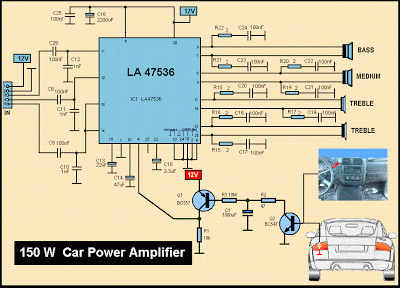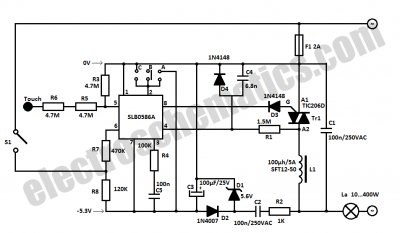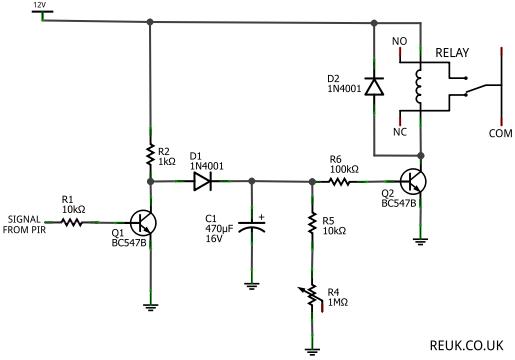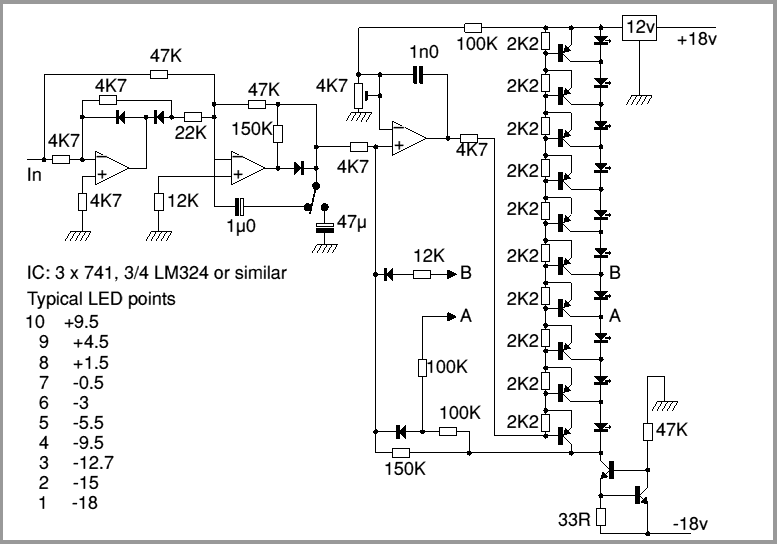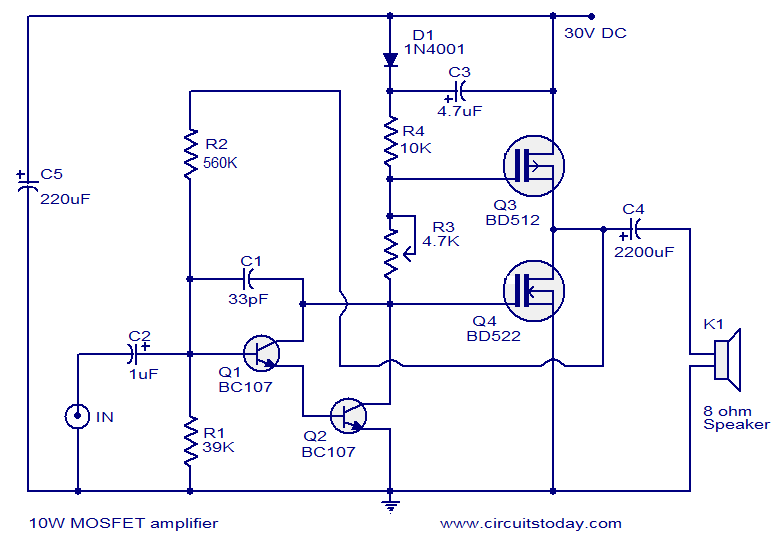
RF circuits
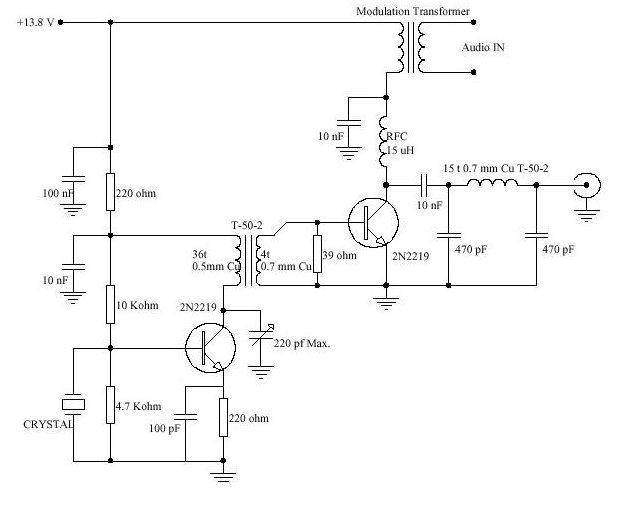
A field strength meter utilizing a biased Schottky detector employs a temperature-compensated Schottky diode within an amplified, untuned field strength indicator powered by two AA cells. This device indicates the relative field strength of RF fields ranging from a few kHz to the microwave region. It is a low-cost solution for wireless network antennas, including amplifier schematics, wireless card modifications, RF test equipment, and software, along with amplifier and antenna designs for the 915 MHz frequency range. Additionally, an absorption wavemeter measures the strength of radio emissions, making it an essential tool for investigating mobile phone usage. The Radio Data System (RDS) encoder is designed for VHF/FM sound broadcasts in the 87.5 MHz to 108.0 MHz range, capable of carrying either stereophonic or monophonic programs. The RF field strength probe (AT90S1200A) features a broadband probe with a small antenna, approximately 15 cm long, made of insulated wire. This antenna detects radio frequency energy, which is then converted into millivolt-level signals suitable for input into a digital voltmeter (DVM).
The field strength meter described utilizes a biased Schottky detector, which is known for its fast response and low forward voltage drop, making it ideal for RF applications. The device's design includes a temperature-compensated Schottky diode to ensure accurate readings across varying environmental conditions. The untuned nature of the field strength indicator allows it to operate effectively across a broad frequency range, from a few kHz to the microwave region, thus making it versatile for various applications including wireless communication systems and RF testing.
The power supply for the device consists of two AA batteries, ensuring portability and ease of use. The output of the field strength meter provides a relative measurement of RF field strength, which can be crucial for optimizing antenna placement and evaluating the performance of wireless networks. The low-cost nature of this design makes it accessible for hobbyists and professionals alike.
In addition to the field strength meter, the absorption wavemeter serves a critical role in measuring the strength of radio emissions. This device is particularly useful for research and development in mobile phone technology, allowing for the assessment of emissions and compliance with regulatory standards.
The RDS encoder is integrated into the system to facilitate the transmission of additional data alongside audio signals in VHF/FM broadcasts. This capability enhances the functionality of radio broadcasts, enabling the delivery of information such as song titles, artist names, and traffic updates.
The RF field strength probe (AT90S1200A) is equipped with a compact antenna design, which allows it to capture RF energy effectively. The small size of the probe, combined with its ability to generate millivolt-level signals, makes it compatible with digital voltmeters, thereby providing a straightforward method for measuring field strength in various environments. This combination of devices forms a comprehensive toolkit for RF measurement and analysis, suitable for both professional and experimental applications.Field Strength Meter Using A Biased Schottky Detector A temperature compensated Schottky diode is used in an amplified, untuned field strength indicator that is powered by two AA cells idicates the relative field strength of RF fields from a few kHz into the microwave region Low cost wireless network antennas, schematics of amplifiers, wireless ca rds and modification ideas, RF test equipment and software, information, amplifier and antenna designs for the 915 MHz WaveLAN MOBILE PHONE ABSORPTION WAVEMETER An absorption wavemeter is a device which can make measurements on the strength of radio emissions and so this instrument is an essential item for investigating the mobile phones RDS ENCODER RADIO DATA SYSTEM Encoder, Radio Data System, RDS, is intended for application to VHF/FM sound broadcasts in the range 87. 5 MHZ to 108. 0 MHZ which may carry either stereophonic (pilot-tone system) or monophonic programs RF Field Strength Probe (AT90S1200A) This broadband probe has a small antenna (about a 15 cm length of insulated wire).
Radio Frequency energy coupled to the antenna is detected and made available to drive millivolt level signals to the input of a DVM (Digital Volt Meter) 🔗 External reference
The field strength meter described utilizes a biased Schottky detector, which is known for its fast response and low forward voltage drop, making it ideal for RF applications. The device's design includes a temperature-compensated Schottky diode to ensure accurate readings across varying environmental conditions. The untuned nature of the field strength indicator allows it to operate effectively across a broad frequency range, from a few kHz to the microwave region, thus making it versatile for various applications including wireless communication systems and RF testing.
The power supply for the device consists of two AA batteries, ensuring portability and ease of use. The output of the field strength meter provides a relative measurement of RF field strength, which can be crucial for optimizing antenna placement and evaluating the performance of wireless networks. The low-cost nature of this design makes it accessible for hobbyists and professionals alike.
In addition to the field strength meter, the absorption wavemeter serves a critical role in measuring the strength of radio emissions. This device is particularly useful for research and development in mobile phone technology, allowing for the assessment of emissions and compliance with regulatory standards.
The RDS encoder is integrated into the system to facilitate the transmission of additional data alongside audio signals in VHF/FM broadcasts. This capability enhances the functionality of radio broadcasts, enabling the delivery of information such as song titles, artist names, and traffic updates.
The RF field strength probe (AT90S1200A) is equipped with a compact antenna design, which allows it to capture RF energy effectively. The small size of the probe, combined with its ability to generate millivolt-level signals, makes it compatible with digital voltmeters, thereby providing a straightforward method for measuring field strength in various environments. This combination of devices forms a comprehensive toolkit for RF measurement and analysis, suitable for both professional and experimental applications.Field Strength Meter Using A Biased Schottky Detector A temperature compensated Schottky diode is used in an amplified, untuned field strength indicator that is powered by two AA cells idicates the relative field strength of RF fields from a few kHz into the microwave region Low cost wireless network antennas, schematics of amplifiers, wireless ca rds and modification ideas, RF test equipment and software, information, amplifier and antenna designs for the 915 MHz WaveLAN MOBILE PHONE ABSORPTION WAVEMETER An absorption wavemeter is a device which can make measurements on the strength of radio emissions and so this instrument is an essential item for investigating the mobile phones RDS ENCODER RADIO DATA SYSTEM Encoder, Radio Data System, RDS, is intended for application to VHF/FM sound broadcasts in the range 87. 5 MHZ to 108. 0 MHZ which may carry either stereophonic (pilot-tone system) or monophonic programs RF Field Strength Probe (AT90S1200A) This broadband probe has a small antenna (about a 15 cm length of insulated wire).
Radio Frequency energy coupled to the antenna is detected and made available to drive millivolt level signals to the input of a DVM (Digital Volt Meter) 🔗 External reference
